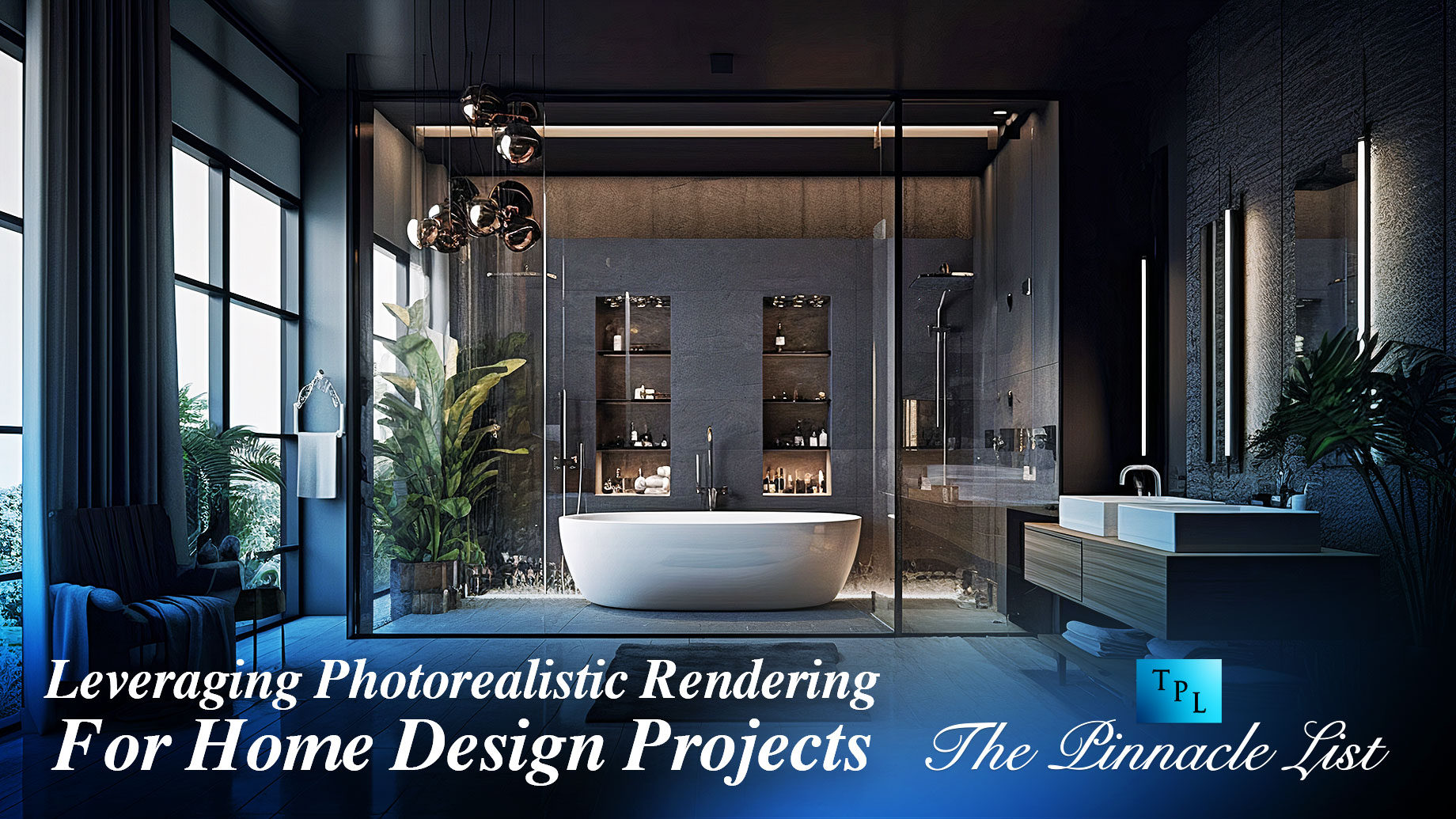
Photorealistic rendering, an innovative technology within the field of home design, has revolutionized the way professionals communicate their ideas to clients. By employing advanced algorithms to simulate natural lighting and precise details, visualization creates lifelike images that accurately represent the architect’s or designer’s vision. This powerful tool, yielding photorealistic renderings, significantly enhances the visualization process, enabling clients to fully comprehend the proposed design and imagine the final product. With photorealistic 3d models, the bridge between creative imagination and concrete reality becomes more tangible, underscoring the pivotal role they play in the realm of home design.
Understanding Photorealistic Rendering
Photorealistic rendering creates real-life 3D architectural renderings using advanced rendering engines and techniques. It achieves highly realistic visuals by simulating lighting, textures, and spatial relationships. Photorealistic rendering software enables architects and designers to bring their visions to life with precision and fidelity.
Photorealistic rendering services offer expertise in producing captivating renderings that showcase designs authentically. Skilled artists utilize advanced techniques to create lifelike visuals. These services enhance presentations, marketing materials, and design proposals, elevating the overall design experience and increasing project success.
Who Uses Photorealistic Rendering Models?
Photorealistic rendering software and models have diverse applications in several professions:
- Home Builders & Remodelers: Photorealistic rendering aids in generating designs, incorporating client feedback, and visualizing proposed changes in interior design.
- Architects: Photorealistic rendering showcases proposed designs, facilitating client presentations, design competitions, and sales efforts.
- Interior Designers: Photorealistic rendering enables the presentation of multiple design variations, involving clients in the decision-making process.
- Real Estate Professionals: Photorealistic rendering enhances property marketing, allowing potential buyers to envision the property’s potential and boosting sales.
- Landscape Designers: High-quality rendering helps showcase outdoor projects, presenting garden plans, pool installations, and outdoor living spaces to clients.
Driven by advanced rendering engines, photorealistic rendering models offer a level of realism and detail that non-photorealistic techniques cannot achieve. They revolutionize visual communication in these industries, leading to improved client satisfaction and successful project outcomes.
Types of Photorealistic Renderings
Photorealistic renderings encompass different types, each serving a specific purpose in visualizing design concepts:
Interior design rendering: This type of rendering focuses on showcasing the interior aspects of a design, including room layout, furnishings, wall textures, and lighting. Interior designers use these renderings to present their ideas and engage clients in the design process.
Exterior home design rendering: Exterior renderings depict the external appearance of a building or home, including front, back, and side views. They provide a realistic representation of the property’s exterior, helping clients visualize the final look and feel.
3D models with custom lighting and sun orientation: These renderings allow for customization of lighting conditions, such as adjusting light intensity, shadows, and sun position. This feature enables the creation of emotionally engaging visuals, allowing clients to imagine themselves in the space.
Real estate agents and interior designers often rely on these types of photorealistic architectural rendering to enhance their marketing strategies. By presenting stunning images that capture all the necessary details, these renderings contribute to a compelling representation of the property or design. Moreover, the ability to manipulate the camera position adds flexibility in capturing the most captivating angles and delivering the final photorealistic image that leaves a lasting impression.
Benefits of Photorealistic Rendering
Photorealistic rendering plays a crucial role in helping clients visualize the finished project. By utilizing advanced rendering programs, these renderings provide a realistic representation of the design from different angles. Clients can grasp the aesthetics, spatial layout, and overall ambiance, enabling them to make informed decisions and develop a clear vision of the final outcome.
Photorealistic rendering supports real-time feedback and updates throughout the design process. By incorporating photometric lighting and employing rendering models, designers can present clients with accurate visuals that closely resemble the physical world. This facilitates effective communication and collaboration, as clients can provide feedback and make adjustments before construction begins.
Photorealistic rendering serves as a powerful sales tool, establishing an emotional connection with potential clients. These visually captivating renderings, enhanced through post-production techniques, evoke emotions and create a compelling narrative. They enable contractors and real estate professionals to showcase the property’s potential and generate interest, boosting sales and driving business growth.
The combination of photorealistic rendering, with its ability to develop images that forge an emotional connection, and the integration of photometric lighting techniques, significantly enhances the visualization and marketing efforts in the industry.
How to Generate a Photorealistic Rendering in Minutes
Creating photorealistic renderings can be achieved quickly by following these steps:
- Choose an interior atmosphere to set the desired mood and ambiance for the rendering.
- Add and customize furnishings, selecting from a vast library of options and placing them in the scene to enhance realism.
- Customize exterior surface materials, such as covering, cladding, or siding, to achieve the desired look for the building’s exterior.
- Add exterior elements like plants, outdoor furniture, or pools to complete the scene and add depth.
- Choose the sun orientation and lighting settings to create the right light and shadows, enhancing the realism of the final result.
- Save camera viewpoints to easily experiment with different angles and perspectives without recreating the scene.
- Generate high-definition (HD) renderings with a single click, producing a final 3d model that showcases the project’s details and significantly increases realism.
- Share the renderings with your team and clients, facilitating collaboration and feedback during the design process.
By following these steps, users can generate photorealistic 3D renderings that accurately portray their design projects, bringing them to life and enhancing communication with stakeholders.
Conclusion
Photorealistic rendering in home design projects offers life-like visuals and crucial benefits. It allows effective communication, aids in design decisions, and engages clients. With various types of photorealistic rendering, professionals can create stunning and realistic representations. By using this technology, they enhance presentations, marketing, and establish an emotional connection with clients. The power of photorealistic rendering adds value to the design process, empowering informed decisions and success in the competitive real estate industry.